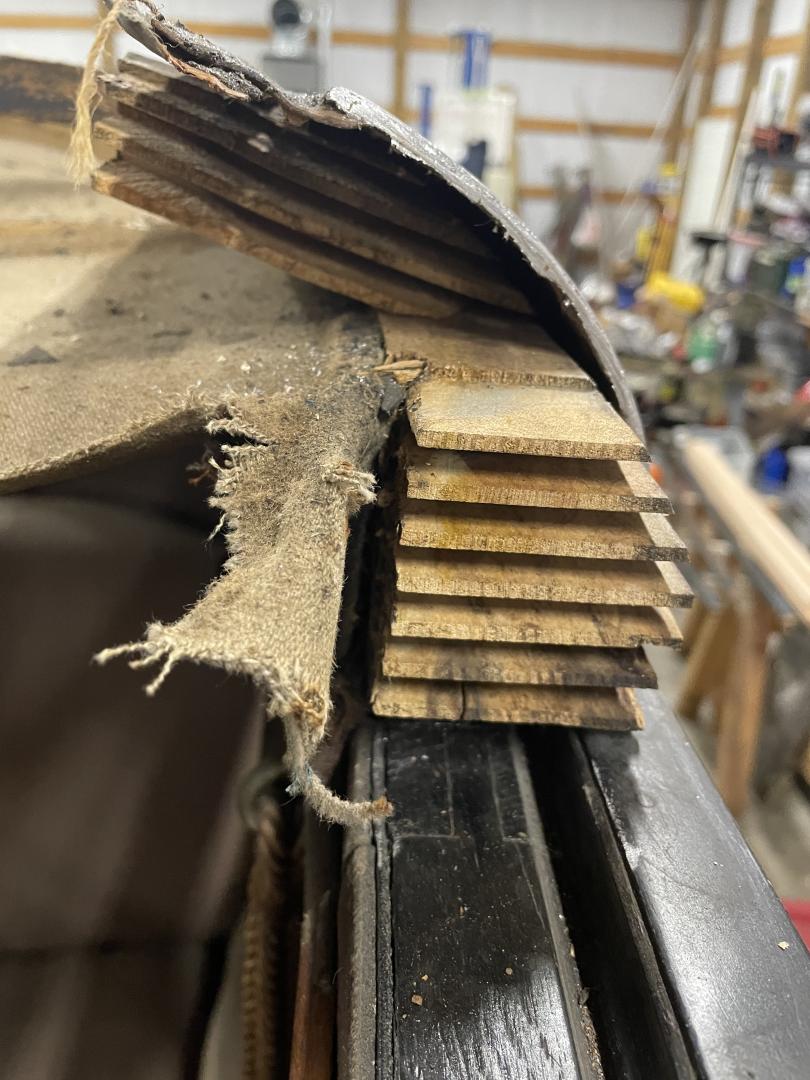- Home
- About Us
- Join/Renew
- Member Benefits
- Member Pages
- Log In
- Help
- Museum Store
I would like to learn more about the details of the wood framing of the factory lwb sedan body above the side windows. If anyone has experience, photos, etc. with woodwork in the upper body they would like to share, that would really help me.
I went in, exploratory surgery in a way, on the driver’s side to see what was going on. Basically the top wood is gone from the center pillar forward; there was some really bodged-up efforts in the distant past to create something to hold things together: plywood scraps and such. The top rail is somewhat iffy underneath the drip rail from the center post above the rear door for about 18 inches. Mist of the nails are holding in that area though.I found the lead joints in the roofside sheet metal. At least the sheet steel seems to be intact and not rusted away anywhere.
I looked under the upholstery on the passenger side; the wood is not good but it’s still there at least. There is some bodging there but not nearly as much.
Were Pierce factory bodies framed with ash?
As told to me, the bodies were framed with first growth ash
I agree, ash was the wood most commonly used. If you replace the existing with ash, make sure you get wood that has been recently cut and dried. Such wood is very easy to work with, cut and shape, but it hardens over time. I’ve installed ash in a car, come back about two years later to make some modifications, and it was almost like cutting mild steel, it was so hard.
 I’m
I’m
It seems we have a problem here…
Interestingly there seems to be a waxy coating on the backside of the pieces of exterior sheet metal I have removed. No paint. Where this coating is intact there is no rust underneath. Good idea from 1930?
Another observation: the apparent absence of any glue in any of the joints in the wood I have encountered. There is a substantial finger joint in the top header just above the hinges of the rear doors. I simply pulled/wiggled the joint apart and there wasn’t a sign it was ever glued, nor was it rotted. There are wood pegs in drilled holes which join the lower header to the top section where the roof cross-rails fit into rabbeted oval holes; again no sign of glue. Interesting.

I never noticed any residuals of the animal cassein glue in joints I have pulled apart. I think it soaks into the wood and is not water resistant. 40 years ago I used resorcinol adhesive to glue joints in replacement wood, it is one of the strongest, most water and rot resistant glues but requires accurate joints. It is what Howard Hughes used on the “Hercules” (“Spruce Goose”) wooden flying boat. It seems to be very hard to find now, so on my recent ’35 project I used epoxies which are still much better than the original casseins and more forgiving of joint inaccuracies.
Jim and Randy,
I use Smooth-On for my Morgans. It is designed for laminated bow and arrow, bows. It is flexible but strong.
